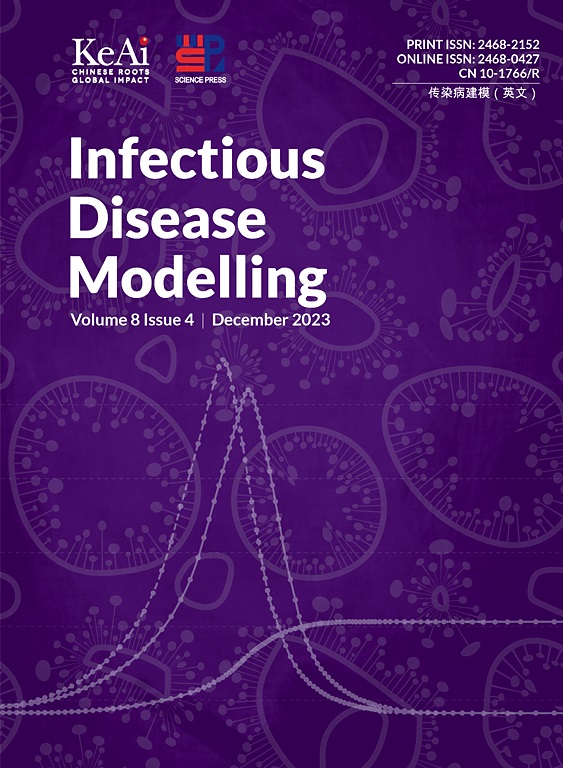Stochastic modelling of viral infection spread via a Partial Integro-Differential Equation
IF 2.5
3区 医学
Q1 Medicine
引用次数: 0
Abstract
In the present article we propose a Partial Integro-Differential Equation (PIDE) model to approximate a stochastic SIS compartmental model for viral infection spread. First, an appropriate set of reactions is considered, and the corresponding Chemical Master Equation (CME) that describes the evolution of the reaction network as a stochastic process is posed. In this way, the inherent stochastic behaviour of the infection spread is incorporated in the modelling approach. More precisely, by considering that infection is propagated in bursts we obtain the PIDE model as the continuous counterpart to approximate the CME. In this way, the model takes into account that one infectious individual can be in contact with more than one susceptible person at a given time. Moreover, an appropriate semi-Lagrangian numerical method is proposed to efficiently solve the PIDE model. Numerical results and computational times for CME and PIDE models are compared and discussed. We also include a comparison of the main statistics of the PIDE model with the deterministic ODE model. Moreover, we obtain an analytical expression for the stationary solution of the proposed PIDE model, which also allows us to study the disease persistence. The methodology presented in this work is also applied to a real scenario as the COVID-19 pandemic.
病毒感染传播的偏积分-微分方程随机模型
在本文中,我们提出了一个偏积分-微分方程(PIDE)模型来近似病毒感染传播的随机SIS区室模型。首先,考虑一组合适的反应,并建立相应的化学主方程(CME),将反应网络的演化描述为一个随机过程。通过这种方式,感染传播的固有随机行为被纳入建模方法。更准确地说,考虑到感染是在爆发中传播的,我们得到了PIDE模型作为近似CME的连续对应物。这样,该模型考虑到一个有传染性的个体在给定时间内可能与一个以上的易感者接触。此外,提出了一种合适的半拉格朗日数值方法来有效地求解PIDE模型。对CME和PIDE模型的数值结果和计算时间进行了比较和讨论。我们还包括PIDE模型与确定性ODE模型的主要统计量的比较。此外,我们还得到了PIDE模型的平稳解的解析表达式,这也使我们能够研究疾病的持久性。本工作中提出的方法也适用于COVID-19大流行等真实情景。
本文章由计算机程序翻译,如有差异,请以英文原文为准。
求助全文
约1分钟内获得全文
求助全文
来源期刊

Infectious Disease Modelling
Mathematics-Applied Mathematics
CiteScore
17.00
自引率
3.40%
发文量
73
审稿时长
17 weeks
期刊介绍:
Infectious Disease Modelling is an open access journal that undergoes peer-review. Its main objective is to facilitate research that combines mathematical modelling, retrieval and analysis of infection disease data, and public health decision support. The journal actively encourages original research that improves this interface, as well as review articles that highlight innovative methodologies relevant to data collection, informatics, and policy making in the field of public health.
 求助内容:
求助内容: 应助结果提醒方式:
应助结果提醒方式:


